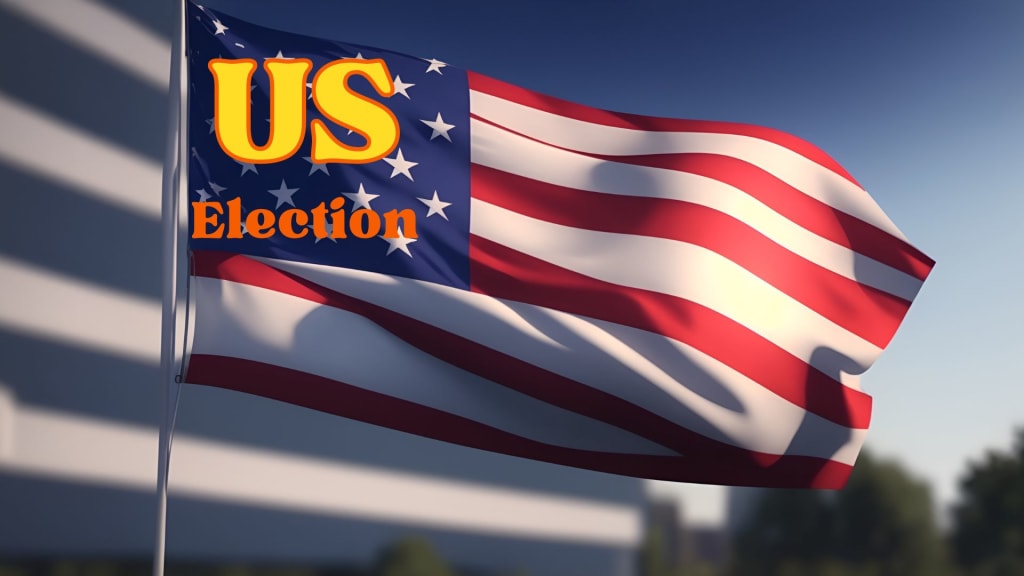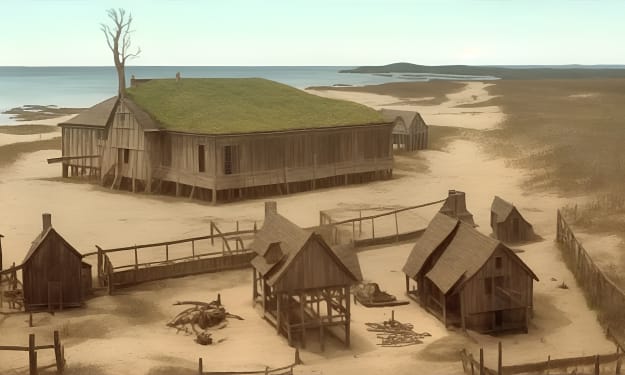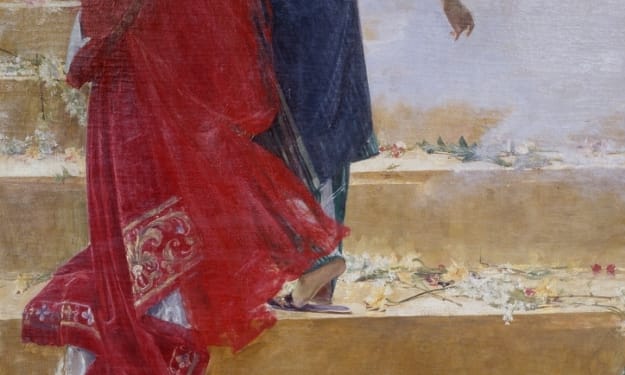Bush vs Gore (2000)
US Court Case Related with Election

The case of Bush v. Gore (2000) stands as one of the most consequential and contentious legal battles in American electoral history. At its core, this case revolved around the disputed results of the 2000 United States presidential election, which pitted Republican candidate George W. Bush against Democratic candidate Al Gore. This high-stakes legal showdown eventually made its way to the United States Supreme Court, where the justices were tasked with determining the outcome of the election. The 2000 election, which took place on November 7, 2000, was extraordinarily close and came down to the electoral votes of one key state: Florida. Florida's electoral votes were crucial for securing the presidency, and the state's vote count was marred by controversies and disputes that would ultimately end up in the courtroom.
Background
The backdrop of the Bush v. Gore case can be traced back to the election night of November 7, 2000. The initial vote count in Florida showed George W. Bush with a narrow lead over Al Gore. However, Florida's election law allowed for an automatic recount if the margin of victory was less than 0.5%. As it became evident that the margin was within that range, the recount process began. Florida's recount process quickly became a source of intense scrutiny and controversy. The recount efforts were marred by inconsistent standards for evaluating disputed ballots, known as "hanging chads" and "butterfly ballots," which added to the confusion. "Hanging chads" referred to partially punched or indented ballot holes that were the subject of much debate over whether they should be counted as votes.
As the recount progressed, legal battles erupted at various levels of the Florida court system. Both the Bush and Gore campaigns filed lawsuits, with each side seeking to gain an advantage in the recount process. The Florida Supreme Court played a pivotal role in interpreting the state's election laws and ordering a statewide manual recount of all undervotes and overvotes, which were ballots that machines had not registered as valid votes. This recount process became a focal point of national attention, as the entire country awaited the outcome of Florida's electoral votes to determine the next President of the United States. On December 9, 2000, the Florida Supreme Court ordered that the recount continue, extending the uncertainty and legal battles.
Key Legal Issues
The Bush v. Gore case raised several key legal issues that ultimately led to its consideration by the United States Supreme Court:
a. Equal Protection Clause: One of the central legal issues in the case was whether the varying recount methods employed in different Florida counties violated the Equal Protection Clause of the Fourteenth Amendment to the U.S. Constitution. The argument was that Florida's recount process lacked uniform standards, leading to potential discrimination against voters in counties with different recount procedures. The Supreme Court needed to decide whether these disparities violated the principle of equal protection under the law.
b. Federal vs. State Authority: The case also raised questions about the authority of the Florida Supreme Court to interpret and apply state election laws. The Bush campaign argued that the Florida Supreme Court's decisions, particularly its order for a statewide manual recount, went beyond its proper role and infringed upon the authority of the Florida legislature to determine the state's electors. This issue revolved around the interpretation of the federal statute known as the "safe harbor" provision, which set a deadline for resolving election disputes.
c. Timing and Certiorari: Another crucial issue was the timing of the case. The Supreme Court had to determine whether the case should have been accepted and heard by the court, given the urgency of the election and the looming deadline for the Electoral College vote. The Court had to consider whether there was enough time to hear the case and make a decision that would not disrupt the electoral process.
In December 2000, the U.S. Supreme Court granted certiorari and agreed to hear the case. The decision to hear Bush v. Gore marked the culmination of weeks of legal battles, intense public scrutiny, and political tension, setting the stage for one of the most consequential rulings in American electoral history.
Supreme Court's Decision
On December 12, 2000, the United States Supreme Court issued its historic decision in Bush v. Gore. In a 5-4 ruling, the Court effectively put an end to the recount efforts in Florida and declared George W. Bush the winner of the state's electoral votes, thus making him the 43rd President of the United States.
The Majority Opinion: The majority opinion, authored by Justice Antonin Scalia and joined by Chief Justice William Rehnquist and Justices Anthony Kennedy, Clarence Thomas, and Sandra Day O'Connor, rested on several key arguments:
1. Equal Protection Clause: The majority held that the varying recount standards in different Florida counties violated the Equal Protection Clause of the Fourteenth Amendment. They argued that the lack of uniform standards for recounting ballots created an arbitrary and unequal system that treated voters differently based on where they lived. The majority asserted that this unequal treatment violated the Constitution.
2. Lack of Time: The majority emphasized the looming deadline for the Electoral College vote, which was set for December 18, 2000. They argued that there was not enough time for a constitutionally adequate recount to be completed under the existing circumstances. Therefore, they ordered that the Florida recount be stopped.
3. Remedy: Rather than remanding the case back to the Florida courts for further proceedings, the majority declared that there was no constitutional way to conduct a recount that would meet the Equal Protection requirements in a timely manner. As a result, they effectively handed Florida's electoral votes to George W. Bush, effectively deciding the outcome of the presidential election.
The Dissenting Opinion: The four dissenting justices, Justices John Paul Stevens, David Souter, Ruth Bader Ginsburg, and Stephen Breyer, issued a strong dissenting opinion. They argued that the majority's decision was flawed on several grounds:
1. Equal Protection Clause: The dissenting justices contended that the majority misapplied the Equal Protection Clause. They argued that the Supreme Court had historically deferred to state courts on matters related to state law, including the interpretation of election laws. They believed that the Florida Supreme Court's actions were well within its authority to resolve election disputes.
2. Federalism: The dissent emphasized the importance of federalism and the traditional principle of allowing states to manage their own elections. They expressed concern that the majority's decision intruded upon the authority of the state of Florida in administering its electoral process.
3. Remedy: The dissenting justices advocated for sending the case back to the Florida courts to determine a proper remedy that would ensure all votes were counted. They believed that the Court's intervention was premature and that the constitutional issues could have been addressed through state court proceedings.
Impact and Legacy
The impact of the Bush v. Gore decision was profound and far-reaching:
1. Election Certainty: The decision put an end to the recount efforts in Florida and provided a sense of finality to the 2000 election. George W. Bush was declared the winner of the presidency, and he was inaugurated on January 20, 2001.
2. Controversy and Criticism: The decision was met with both praise and criticism. Supporters saw it as a necessary resolution to a contentious election, while critics argued that it undermined the principle of equal protection and federalism by halting the recount.
3. Legal Precedent: Bush v. Gore remains a significant legal precedent, particularly in cases involving election disputes and equal protection claims. It is often cited in legal discussions about voting rights and the role of the courts in electoral matters.
4. Election Reforms: The controversy surrounding the 2000 election and the Bush v. Gore decision prompted many states to enact election reforms, including improvements in voting technology and ballot design, to prevent similar issues in future elections.
5. Political Polarization: The case and its outcome contributed to increased political polarization in the United States. It left a lasting impact on public perception of the U.S. Supreme Court and its role in partisan disputes.
Bush v. Gore remains a landmark case in U.S. legal and electoral history, serving as a vivid reminder of the complex and intertwined relationship between law, politics, and elections. The decision, while providing a resolution to the 2000 presidential election, continues to be debated and analyzed for its legal reasoning, its impact on future elections, and its implications for the principles of equal protection and federalism.
The case underscored the importance of clear and consistent election procedures, the significance of the Supreme Court in shaping the nation's political landscape, and the potential consequences of legal interventions in the electoral process. While it resolved one of the closest and most contentious presidential elections in U.S. history, it also left a lasting legacy that continues to influence discussions about voting rights, election administration, and the role of the courts in determining election outcomes.
About the Creator
Enjoyed the story? Support the Creator.
Subscribe for free to receive all their stories in your feed. You could also pledge your support or give them a one-off tip, letting them know you appreciate their work.






Comments
There are no comments for this story
Be the first to respond and start the conversation.